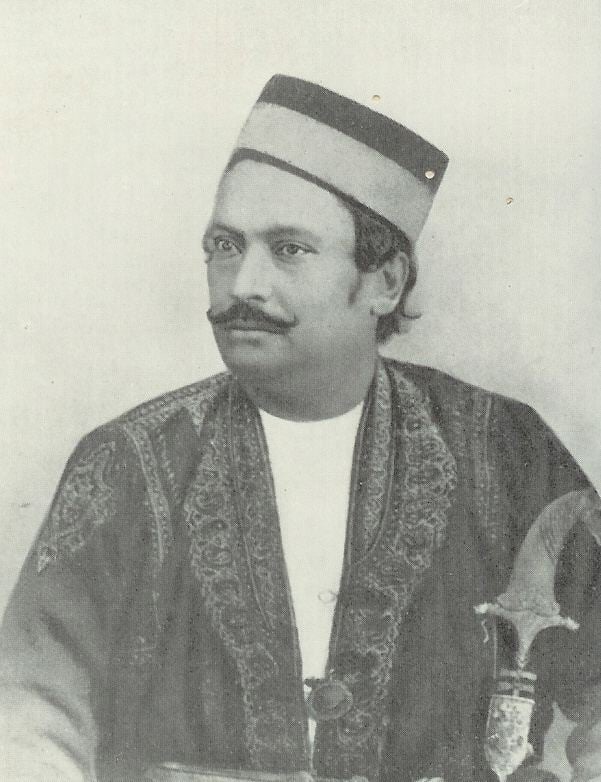Occupation Social reformer Name Dakshinaranjan Mukherjee | Died July 15, 1898, Lucknow Spouse Basanta Kumari (m. 1832) | |
 | ||
Born 1814 Kolkata Education Presidency University, Kolkata | ||
Raja Dakshinaranjan Mukherjee (Bengali: দক্ষিণারঞ্জন মুখার্জ্জী) Taluqdar of the formerly confiscated taluq of Shankarpur in the United Provinces (1814 – 15 July 1878) was one of the leaders of the Young Bengal group in 19th-century India. An orator, editor of several periodicals, and a social reformer, he had donated land for the Bethune School and assisted David Hare in his social works.
Contents
Early life
Dakshinaranjan Mukherjee's father Jaganmohan Mukherjee, who belonged to Bhatpara, had married into the Pathuriaghata branch of the Tagore family and agreed to be a ‘ghar-jamai’ (a groom who remains back with his in-laws as part of their family). Dakshinaranjan studied at Hare School and Hindu College. While a student of Hindu College, he was influenced by Henry Louis Vivian Derozio, the main person behind the Young Bengal movement. When his friend Krishna Mohan Banerjee was turned out of his house for converting to Christianity, Mukherjee provided him protection and support.
Activities at Kolkata
While a student Mukherjee published the magazine Jnananneswan in 1831. The next year it became a bilingual magazine. He spoke against suppression of newspapers by the government. He was one of main initiators for the establishment of the British Indian Association and contributed regularly to the Bengal Spectator. He practiced as a lawyer and was the first Indian to be appointed as a collector of Calcutta Municipality. Later he also worked in the court of the Nawab at Murshidabad.
He had once given a loan of Rs. 60,000 to David Hare. As Hare was unable to pay back the loan, he gave Mukherjee some land in lieu of it. Mukherjee, in turn, donated that land in 1849 to John Elliot Drinkwater Bethune for the establishment of Kolkata’s first secular school for girls.
Marriage
After the death of Maharaja Tej Chandra Ray of Bardhaman in 1832, Mukherjee visited the family home in connection with some legal disputes. He met Tej Chandra’s young widow, Basanta Kumari, the maharaja's 8th wife, whom Mukherjee later married by registration. The episode created quite a sensation in Calcutta, since Mukherjee and Basanta Kumari, chose to elope and get married, but were later caught by the girl's father, Pran Chand Kapoor.
Basanta Kumari, however, once again managed to escape from her father's custody to be reunited with Mukherjee, with whom she migrated to Lucknow in 1851. Mukherjee and his wife, who was older than he was, remained in Lucknow until the end of their lives.
Later life at Lucknow
Mukherjee prospered in Lucknow. For helping the British during the Sepoy Mutiny, he was rewarded with the Shankarpur taluk in 1859. He was made honorary assistant commissioner of Lucknow and Awadh. He started publishing Lucknow Times, Samachar Hindustani and Bharat Patrika from Lucknow. He established the Canning College at Lucknow. He was honoured with the title of ‘Raja’ by the Viceroy, Lord Mayo in 1871.
He established the Awadh British Indian Association in 1871 and campaigned for the formation of a provincial government with equal number of nominated and elected legislators and lost some favour with the British government. Dakshinaranjan Mukherjee died in Lucknow on 15 July 1898.
